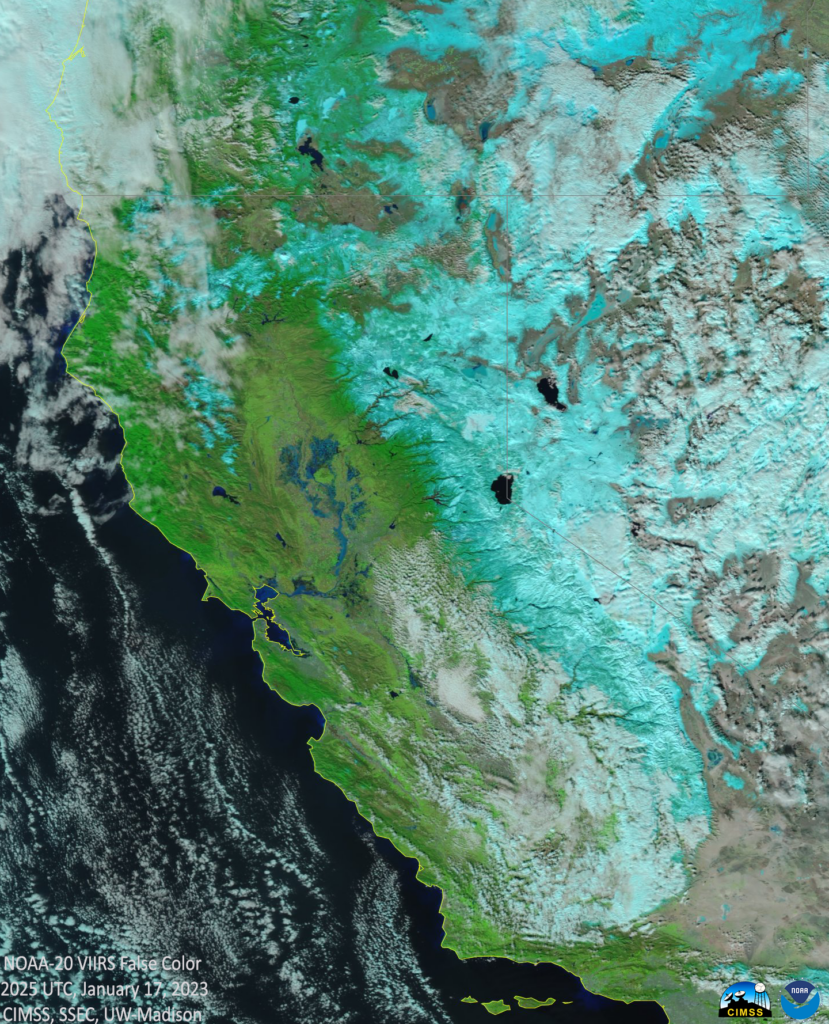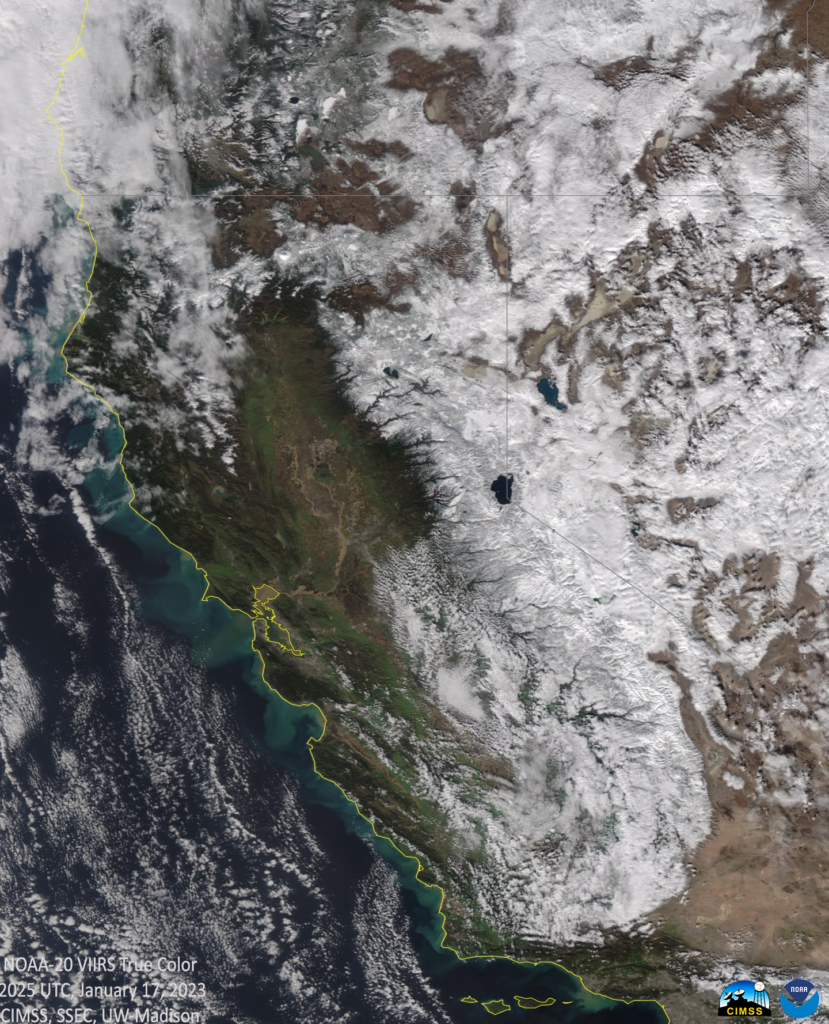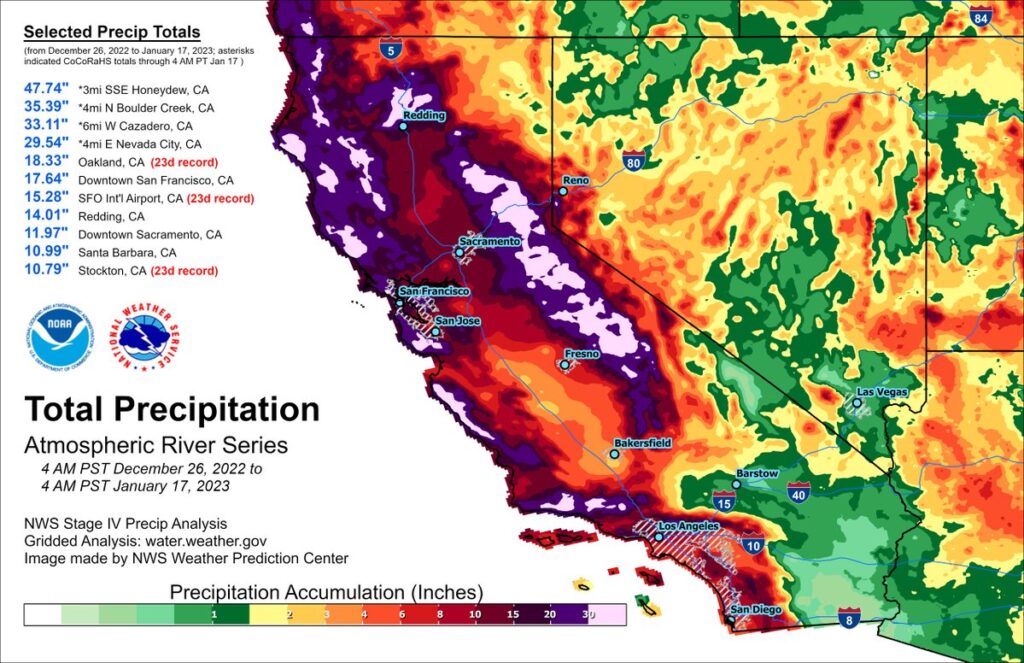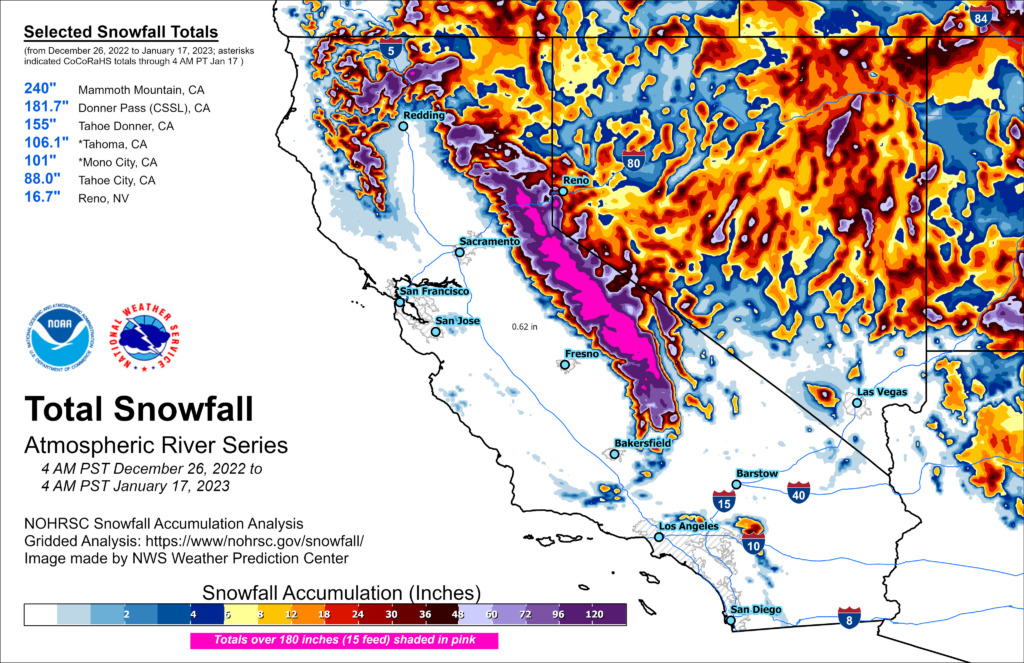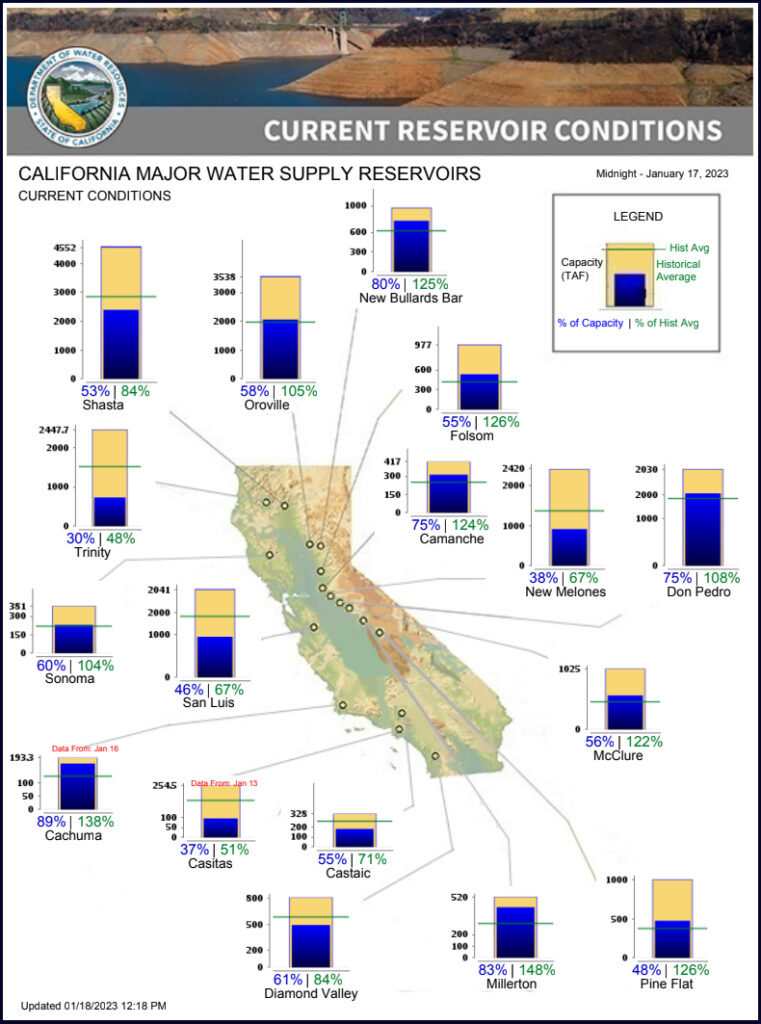California’s Record Snowpack and Brimming Reservoirs
A multi-week “parade of storms” over the Pacific Ocean featuring a persistent atmospheric river pattern and numerous winter storms pounding the U.S. west coast has resulted in record snowpack in the Sierra Nevadas with water equivalency at 205% of normal for mid-January in the northern Sierras, 255% central, and 293% of normal for the southern Sierras. (Data relayed via NWS Sacramento from the California DWR) A break in the cloud cover on Tuesday January 17th enabled satellite views of the record snowpack and visual confirmation of the rising reservoirs.
Some California rain gauge locations have already surpassed their average annual rainfall totals and many reservoirs are brimming with water. The NWS Weather Prediction Center reported that for 22 days from December 26 to January 17 the AVERAGE precipitation amount over the entire state of California in that time frame was 11.47 inches, with several locations in central California setting 3-week records. The snow total map for California for that same 22 days indicates upwards of 15 FEET fell in the highest elevations of the Sierra Nevada.
The cumulative rain and snow totals have resulted in rising reservoirs with many at or above historical averages. Several California water reservoirs are above 100% capacity .
The state’s biggest reservoir, the Shasta Lake reservoir in northern California, which is capable of holding 4.5 million acre-feet of water, was at 53% capacity as of mid-day on January 18th, . The Diamond Valley reservoir in Southern California which stores 810,000 acre-feet of water (264 billion gallons) was at 61% capacity.
Ground water is also replenishing making dents in the multi-year drought impacting the western United States.
Compare the weekly Drought Monitor maps (December 27th through January 17th) to see weekly improvements. Note how areas of Exceptional and Extreme drought conditions in California are eradicated during this time period.



